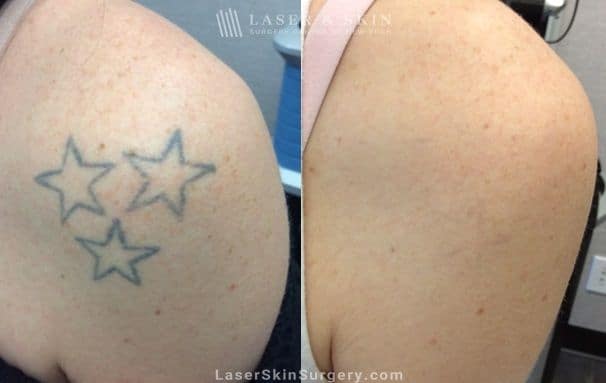Laser tattoo removal has become a popular method for those seeking to erase unwanted ink. The process is based on advanced laser technology, which targets the tattoo ink beneath the skin, breaking it down into smaller particles that the body can naturally eliminate. This non-invasive procedure is effective for removing tattoos of various sizes, colors, and complexities, making it a versatile solution for many individuals.
How Laser Tattoo Removal Works
Laser tattoo removal utilizes high-intensity light beams that penetrate the skin to target the tattoo pigment. The laser selectively heats and breaks down the ink particles without damaging the surrounding skin. Different types of lasers are used depending on the color of the tattoo. For instance, Q-switched lasers are commonly used due to their ability to deliver powerful bursts of energy in very short pulses, effectively shattering the ink particles.
The body’s lymphatic system then works to remove these broken-down particles over the following weeks. Multiple sessions are typically required, with the number depending on factors like the size, color, and age of the tattoo, as well as the patient’s skin type and immune system.
Factors Affecting Removal
Several factors influence the effectiveness of laser tattoo removal. The color of the tattoo is one of the most significant factors; darker colors like black and blue are generally easier to remove, while lighter colors like yellow and green may require more sessions. The depth of the ink and the age of the tattoo also play a role, with older tattoos often being easier to remove due to the ink naturally fading over time.
Skin type is another consideration. People with lighter skin tones tend to have fewer complications, as the laser can more easily target the pigment without affecting the surrounding tissue. However, advancements in laser technology have made it safer and more effective for individuals with darker skin tones as well.
Pain and Aftercare
While laser tattoo removal is generally safe, it can be uncomfortable. Patients often describe the sensation as similar to having a rubber band snapped against the skin. Most clinics offer topical anesthetics to minimize discomfort during the procedure.
Aftercare is crucial to prevent complications like infection or scarring. Patients are typically advised to keep the treated area clean and protected from the sun. Following the practitioner’s aftercare instructions is vital for optimal healing and results.
Conclusion
Laser tattoo removal offers an effective way to erase unwanted tattoos, providing individuals with the opportunity to start anew. With modern advancements in laser technology, the process has become safer, more efficient, and accessible to a broader range of skin types. However, it’s important to consult with a qualified professional to determine the best approach for each individual’s needs.
